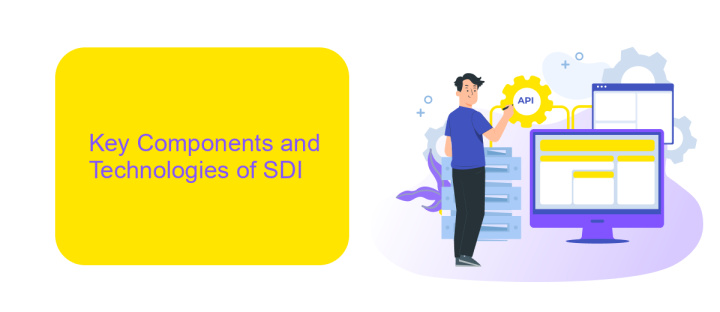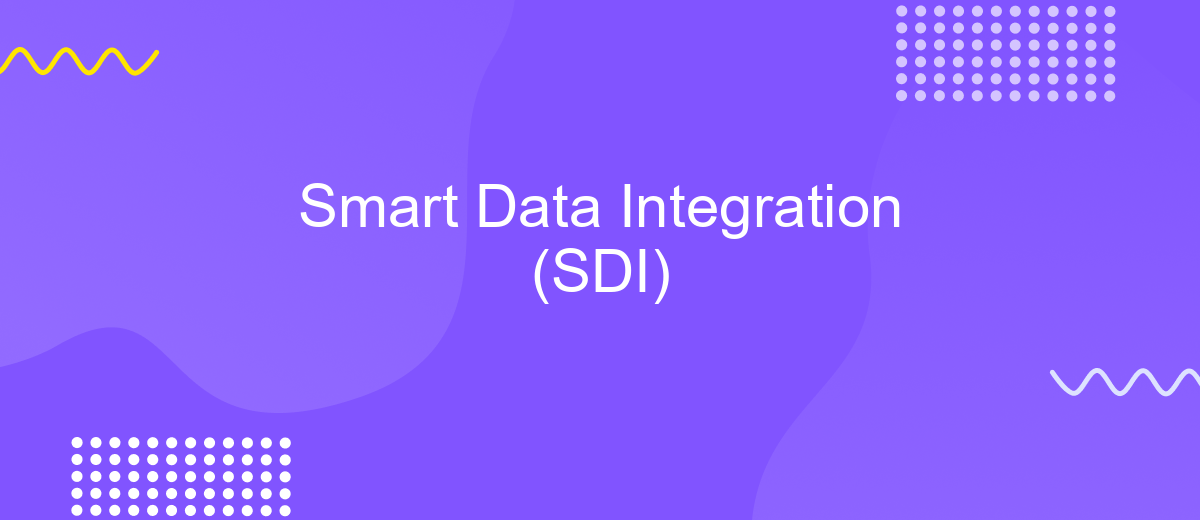Smart Data Integration (SDI)
In the era of big data, Smart Data Integration (SDI) emerges as a crucial solution for businesses aiming to harness the full potential of their data assets. SDI streamlines the process of combining, transforming, and managing diverse data sources, enabling organizations to make informed decisions with greater speed and accuracy. By leveraging advanced technologies, SDI enhances data quality and accessibility, driving innovation and competitive advantage.
Understanding Smart Data Integration (SDI)
Smart Data Integration (SDI) is a transformative approach that enhances the way data is merged and utilized across various platforms. By leveraging advanced technologies, SDI ensures that data from disparate sources is seamlessly integrated, providing a cohesive view that facilitates informed decision-making. This integration process not only improves data quality but also boosts operational efficiency, enabling organizations to respond swiftly to market changes and customer needs.
- Enhanced data accuracy and consistency across systems
- Streamlined data workflows and processes
- Real-time data access and analytics capabilities
- Improved scalability and flexibility of data systems
- Reduced operational costs and time savings
By implementing SDI, businesses can unlock the full potential of their data assets, driving innovation and gaining a competitive edge. It empowers organizations to harness the power of data analytics, providing insights that are critical for strategic planning and execution. As data continues to grow in complexity and volume, SDI offers a robust solution to manage and utilize this data effectively, ensuring sustainable growth and success.
Key Components and Technologies of SDI

Smart Data Integration (SDI) relies on several key components and technologies to effectively manage and streamline data processes. At its core, SDI involves data extraction, transformation, and loading (ETL) tools that facilitate the seamless movement of data across different systems. These tools ensure that data is accurately transformed and ready for analysis. Additionally, data virtualization technology plays a crucial role by allowing users to access and query data without needing to know its physical location or format, thus enhancing flexibility and efficiency.
Another essential component of SDI is the use of integration platforms like ApiX-Drive, which simplify the process of connecting various applications and services. ApiX-Drive provides a user-friendly interface that enables businesses to automate workflows and integrate disparate systems without extensive coding knowledge. Furthermore, data governance and security technologies are vital, ensuring data integrity and compliance with regulations. Together, these technologies form a robust SDI framework that supports real-time data processing and decision-making, ultimately driving business innovation and growth.
Benefits and Use Cases of SDI

Smart Data Integration (SDI) offers a transformative approach to managing and utilizing data in modern enterprises. By seamlessly connecting disparate data sources, SDI enables organizations to unlock valuable insights and make informed decisions. This integration not only enhances data accessibility but also ensures data consistency and accuracy, reducing the time and effort required for data preparation.
- Real-time Analytics: SDI supports real-time data processing, allowing businesses to react swiftly to market changes and customer demands.
- Improved Customer Experience: By integrating customer data from various touchpoints, companies can deliver personalized experiences and improve satisfaction.
- Operational Efficiency: SDI streamlines workflows by automating data integration tasks, leading to increased productivity and cost savings.
- Enhanced Compliance: With centralized data management, organizations can better adhere to regulatory requirements and ensure data security.
In summary, Smart Data Integration is a pivotal tool for businesses aiming to leverage their data assets effectively. It provides a robust framework for real-time analytics, enhances customer experiences, boosts operational efficiency, and ensures compliance. As data continues to grow in volume and complexity, SDI stands out as a crucial solution for maintaining a competitive edge in today's data-driven world.
Challenges and Considerations in Implementing SDI

Implementing Smart Data Integration (SDI) presents several challenges that organizations must navigate to ensure successful deployment. One of the primary challenges is data heterogeneity, where data originates from diverse sources and formats, requiring sophisticated tools to harmonize and integrate effectively. Additionally, data quality issues such as inaccuracies, inconsistencies, and missing values can significantly impact the integration process, necessitating robust data cleansing and validation mechanisms.
Another significant consideration is the scalability of the SDI solution. As data volumes continue to grow exponentially, the integration system must be capable of handling large datasets without compromising performance. This requires a scalable architecture that can adapt to increasing data loads and complex integration scenarios.
- Ensuring data security and privacy during integration processes.
- Managing real-time data integration to support timely decision-making.
- Balancing between centralized and decentralized integration approaches.
- Addressing the need for skilled personnel to manage and maintain SDI systems.
Finally, organizations must consider the cost implications of implementing SDI solutions. This includes not only the initial setup costs but also ongoing maintenance and potential upgrades. A comprehensive cost-benefit analysis is essential to justify the investment and ensure long-term sustainability of the integration strategy.


Future Trends and Evolution of SDI
As the digital landscape evolves, Smart Data Integration (SDI) is poised to become more adaptive and intelligent. Future trends indicate a shift towards more automated and AI-driven integration processes, reducing the need for manual intervention. This evolution will enable seamless data flow across diverse platforms, enhancing decision-making and operational efficiency. The integration of machine learning algorithms will allow systems to predict and resolve integration challenges proactively, ensuring continuous data harmony across various applications.
Moreover, the rise of low-code and no-code platforms, such as ApiX-Drive, is set to democratize data integration. These platforms empower users with minimal technical expertise to configure integrations effortlessly, fostering innovation and agility within organizations. ApiX-Drive, for instance, provides a user-friendly interface to streamline the integration process, making it accessible to a broader audience. As businesses increasingly rely on real-time data insights, SDI will continue to evolve, focusing on scalability, security, and compliance to meet the growing demands of the digital era.
FAQ
What is Smart Data Integration (SDI)?
How does SDI benefit businesses?
What are the challenges of implementing SDI?
How can businesses automate and streamline the SDI process?
What are some best practices for successful SDI implementation?
Do you want to achieve your goals in business, career and life faster and better? Do it with ApiX-Drive – a tool that will remove a significant part of the routine from workflows and free up additional time to achieve your goals. Test the capabilities of Apix-Drive for free – see for yourself the effectiveness of the tool.

